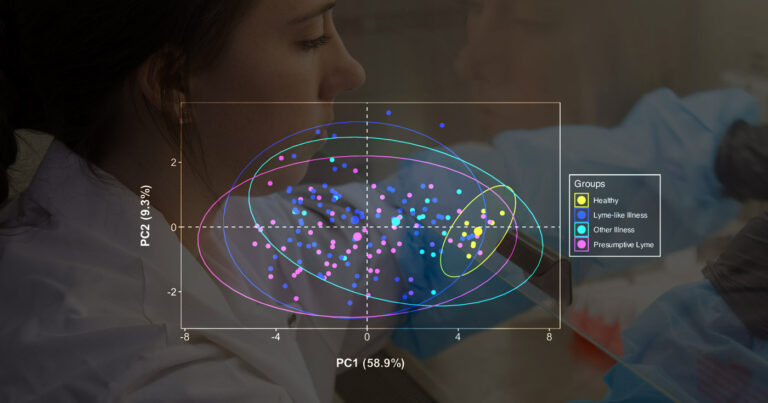Research explores the clinical presentations of Lyme neuroborreliosis
Keeping neurological symptoms and Lyme rashes on the radar.
Insert HTML here

Keeping neurological symptoms and Lyme rashes on the radar.

Examining serology and the health burden of Lyme disease and chronic illness with Victoria Sanderson at the G Magnotta Lab.

Encountering Lyme within the Canadian healthcare system.

It’s good to see organizations working towards common research agendas focussed on evidence and patient health.

Using genetic association study methods, we identify an accessory genome signature associated with dissemination in humans and define the individual plasmids and genes that make up this signature.

Canadian family shares the obstacles faced by their adolescent son.

Background Lyme borreliosis (LB), caused by Borrelia burgdorferi (Bb), is the most common tick-borne infection in Germany. Antibodies against Bb are prevalent in the general population but information on temporal changes of prevalence and estimates of seroconversion (seroincidence) and seroreversion are lacking, especially for children and adolescents. Aim We aimed at assessing antibodies against Bb and factors associated with seropositivity…

Associated chronic illnesses: a workshop to examine common, overlapping clinical and biological factors!

Learn the latest about Vector-Borne Diseases from the world’s top experts, October 19-21 in Boston, Massachusetts.

Recent calls to action by Dr. Monica Embers and Dr. John Aucott.

Abstract Key Clinical Message Lyme neuroborreliosis is the manifestation of Lyme borreliosis that impacts the nervous system. It gives rise to various neurological and psychiatric conditions, and its diagnosis is challenging. The timely administration of antibiotics is effective. A male patient, aged 55, was admitted to the emergency department due to the sudden onset of…

A bite from a tick left a 6-year-old Arkansas boy fighting for his life, his mother says, and he may not be the same when he wakes up. In late June, Aiden Debusk went on a short hike with his family, his mother, Laiken Debusk, told KTHV. She checked her kids for ticks when they…
Abstract The tick, Ixodes scapularis, vectors pathogens such as Borrelia burgdorferi, the bacterium that causes Lyme disease. Over the last few decades I. scapularis has expanded its range, introducing a novel health threat into these areas. Warming temperatures appear to be one cause of its range expansion to the north. However, other factors are also involved. We show that…
Abstract This study aimed to demonstrate that severe neurological motor deficits in the context of late tick-borne disease with mixed microorganism involvement are eligible for long-term combined antibiotic/antiparasitic treatments. The inclusion criteria were: 1. neurological limb paralysis with a disability score >4 according to the EDSS Kurtzke disability scale; 2. serological tests pointing to an…
Abstract This study aimed to demonstrate that severe neurological motor deficits in the context of late tick-borne disease with mixed microorganism involvement are eligible for long-term combined antibiotic/antiparasitic treatments. The inclusion criteria were: 1. neurological limb paralysis with a disability score >4 according to the EDSS Kurtzke disability scale; 2. serological tests pointing to an…